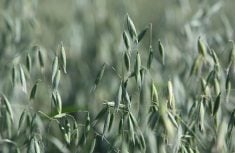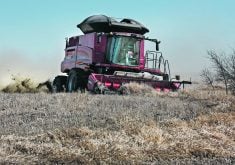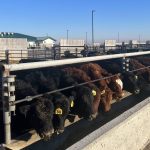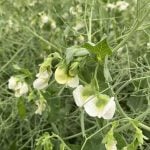Shelterbelt field yields
Field shelterbelts increased crop yields enough to compensate for the area taken out of production by the trees at most of the 42 sites sampled in 1993, says an Alberta Agriculture soil conservation specialist.
Traditionally, shelterbelts have been planted to control wind erosion. However, farmers’ and researchers’ observations suggest field shelterbelts are more than a soil conservation tool.
“With that in mind we’ve started to study crop yields,”said John Timmermans. Alberta Agriculture staff sampled cropped shelterbelt fields in 1993 to gather information on other benefits.
Read Also

VIDEO: Ag in Motion documentary launches second season
The second season of the the Western Producer’s documentary series about Ag in Motion launched Oct. 8.
They found crops near shelterbelts often out-yield crops in the open field. In particular, these yields are in an area about 15 times the height of the shelterbelt.
Moisture conservation is the primary other benefit shelterbelts provide to crops. Protected areas can receive up to three times as much moisture from snow as unprotected land. Crops near shelterbelts can also benefit from increased humidity and temperature, and wind protection. In previous studies, as much as a 21 percent increase in yield over the whole field was attributable to field shelterbelts.
Results from the 1993 research were a bit of a surprise, Timmermans said. “Given 1993’s weather, we didn’t expect to see much effect by shelterbelts on crop yields.”
That’s because below normal snowfall and wind during the winter were followed by a wet summer. “We thought this moisture would negate the soil moisture and yield response we’d seen leeward of shelterbelts.”
However, crop yields still increased in the protected area at most of the sites sampled.On average, shelterbelt field yields were two percent higher than open field yields. Crop responses to shelterbelts in 1993 tended to be better in the brown soil zone than in dark brown or black soil zones.
Timmermans continued his research in 1994. “This fall, crop samples were taken from 70 shelterbelt protected fields throughout Alberta. The samples will be threshed and the results analyzed during the next months.”
– Alberta Agriculture
Water or feed medication?
The belief that bacteria kills pigs leads many swine producers to use anti-bacterials as the first line of defence against scours, rather than good water management and therapy.
Water medication is prompt and efficient for urgent situations, while feed medication is more practical for whole herd treatment.
The small intestine, where most of the nutrients are absorbed into the pig’s body, is lined with tiny fingers called villi.
Micro-organisms can attack and destroy the villi, impairing digestion.
The pig responds to a micro-organic invasion by regenerating the villi on the surface of the intestine or by stimulating cell secretions to flush the organisms out of the body.
This rapid flushing results in scours. Nutrients and fluids, as well as pathogens, are voided together.
The pig is often killed by the shock of progressive dehydration, rather than by the bacterial invasion.
Water is vital in any attempt to prevent initial scours from turning into a full-scale diarrhoeic attack.
Rapid loss of water and electrolytes (body salts, especially sodium) causes the blood to thicken and reduces output from the heart. This leads to death.
Electrolyte solutions provide water, glucose, glycerine and sodium to keep metabolism going.
The extra water in the gut helps flush harmful bacteria and undigested food, helping prevent dehydration.
Advantages of water medication:
- Sick pigs will usually drink when they are reluctant or unable to eat.
- Sick pigs receive high levels of antibiotic more quickly and recover more rapidly.
- Water medication can usually be given more quickly, with no waiting for a special mix of feed to arrive.
- Allows quick administration of electrolytes.
Disadvantages:
- The active ingredient of most drugs is more expensive in water- soluble form.
- Pigs waste far more medicated water than they do medicated feed.
- There may be no water-soluble form of the drug available.
– Manitoba Swine Update














